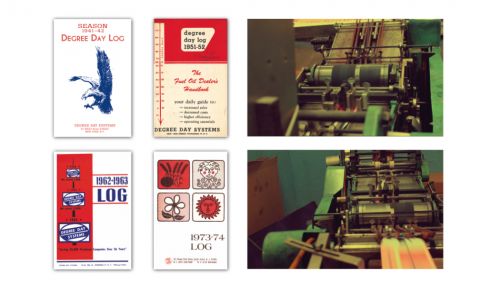All
The World Has Changed. Here is How to Thrive
by Phil Baratz, Angus Energy

Two Words: Delivery. Optimization
Years ago: There weren’t back-office systems, just index cards and file folders with photocopies and handwritten notes. There weren’t on-board computers, only printed delivery tickets. There weren’t remote tank monitors, only the reliance on K-factors calculated five or six times per year. There weren’t online payments, just checks that showed up in the mail or were dropped off at your office.
Those advances all exist now, but none of them do anything that you or your staff can’t do. They just do it faster and more efficiently.
We are all coming out of some of the darkest times we have ever known. What you don’t need is yet another article about the catastrophic impact on our lives, families and communities, regarding our health perspectives or our financial situations. What you do need is an understanding of what lies ahead.
Delivery optimization is just another in a series of technological advances that enables dealers to operate more efficiently and more profitably. With integration to your back-office system and without the need to change your staffs’ behavior, it, too, doesn’t do anything that you can’t do. It just does it faster and more efficiently – optimizing your deliveries and resulting in significant cost savings.
You are, first and foremost, a delivery company. Most of the operational expense you expend every year relates directly to the delivery of fuel; trucks, insurance, gasoline/diesel, maintenance, drivers, dispatchers, and the like. Some items, like delivery trucks, are expenses that exist regardless of how many days per year you use them. Clearly if you could deliver all your gallons with fewer trucks, you would. However, you always seem to need every truck during those coldest weeks in January. Those fixed costs are factored into your operations and are the reason you seem to “lose money during the summer” while “making money during the winter.” Imagine finding a way to run your business with fewer delivery trucks – without increasing the risk of runouts.
You also have a good amount of variable expenses. Each time you dispatch a truck, you are paying for fuel, driver wages and wear and tear on the vehicle – all with the plan to generate profitable sales from that route. Accordingly, each dispatched truck should put a smile on your face. Deliveries and dispatched trucks impact profits, so imagine you did not need as many of them either.
Imagine no longer.
Our industry now has tools that integrate its data with delivery efficiency tools. An example is ADEPT® by Angus Energy, which uses your data to reduce the number of trucks and routes you need for your deliveries. But the industry needs to first understand the basics. The first step in having fewer trucks on the road is to understand why you need them in the first place.
The answer is always the same: January.
January is typically the peak month for everything – deliveries, routes, gallons, drivers, revenue, and trucks. The reason is that we deliver based on the weather, as opposed to delivering based on our costs.
We are all ingrained with the notion of averages: the average customer consumes 900 gallons per year, the average customer has 1.7 service calls per year, the average customer has a K-factor of 5.4, etc. However, none of your customers are average. Averages lets us make decisions more easily, but not more effectively. Ks might average 5.4 (for some dealers), but often 30 percent of deliveries are to customers with Ks that are under 4.0, and 30 percent to customers with Ks that are over 8.0. Yet, we still say things like, “let’s deliver 175 gallons to a 275-gallon tank” whether that user consumes 15 gallons a day in January or he consumes 3 gallons a day. If you actually delivered to your customers based on their K, aka usage, as opposed to their tank level, you would be making deliveries that match up against usage and would be certain there was enough oil in the tank to avoid a runout.
In many cases, simply matching up, or “right-sizing” deliveries to the time of year and the customers’ K would be enough. However, we found that there are programmable ways to shift deliveries — sometimes making them earlier than you might think — in order to lower the number of trucks needed. Remember, own a truck in January; own it in July. If you could move deliveries so that there were fewer trucks needed in January, you would not have to pay for those trucks all year round. In addition, we found that even with some “smaller than optimal” deliveries, the costs savings were still substantial.
There is an end-to-end fully-integrated solution available that dynamically shifts your delivery planning in a way that can dramatically cut down on your delivery costs – and we are ready to show you exactly how it can work for your business.
Imagine delivering all your gallons with far lower expenses and without increasing your risks. Now you can.
Related Posts
 100 Years of Helping Fuel Retailers Deliver!
100 Years of Helping Fuel Retailers Deliver!
Posted on August 18, 2025
 U.S. Competing to Secure Critical Minerals
U.S. Competing to Secure Critical Minerals
Posted on June 16, 2025
 The Clean Air Act, the EPA, and State Regulations
The Clean Air Act, the EPA, and State Regulations
Posted on May 14, 2025
 Day Tanks Support Back-up Generators in Extreme Conditions
Day Tanks Support Back-up Generators in Extreme Conditions
Posted on March 10, 2025
Enter your email to receive important news and article updates.
